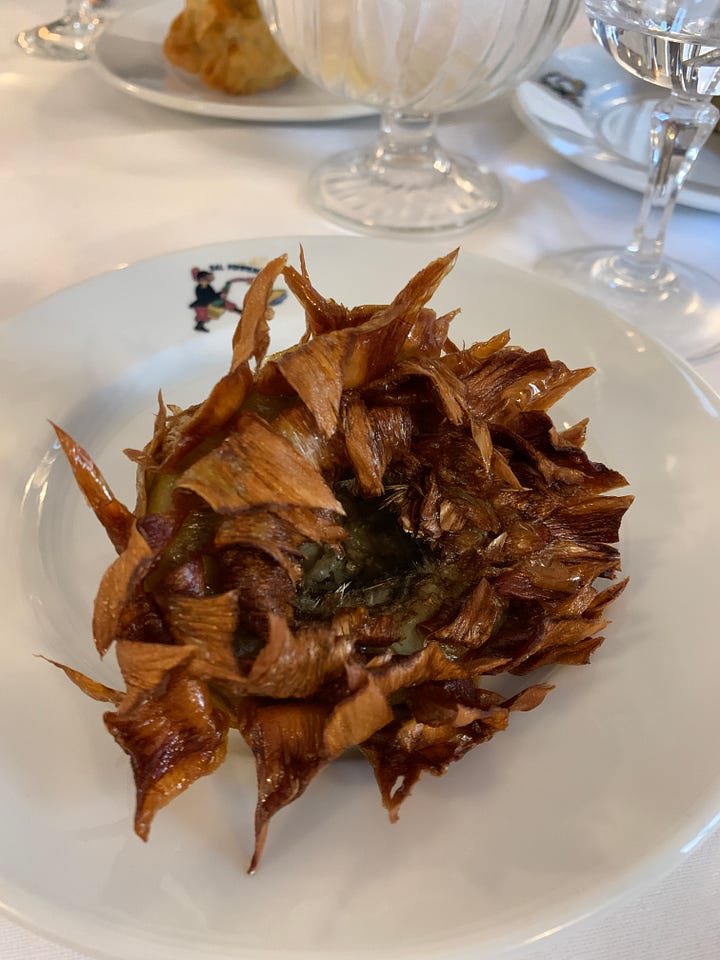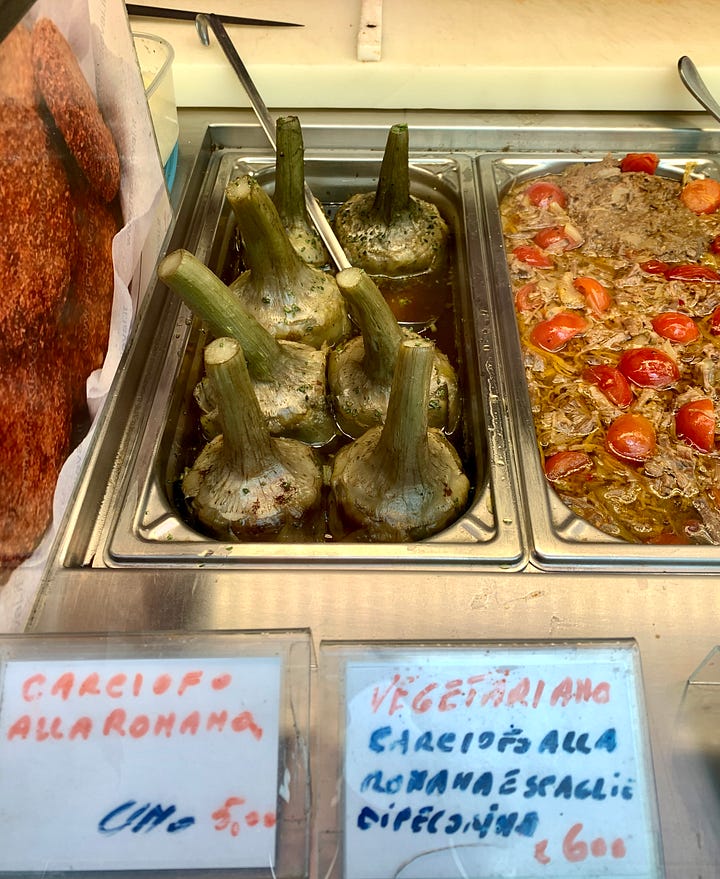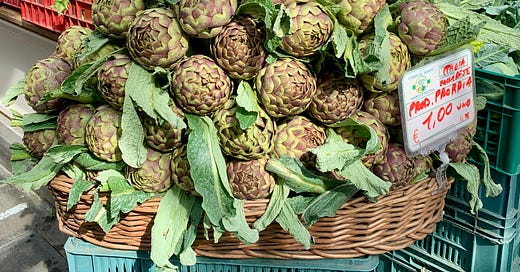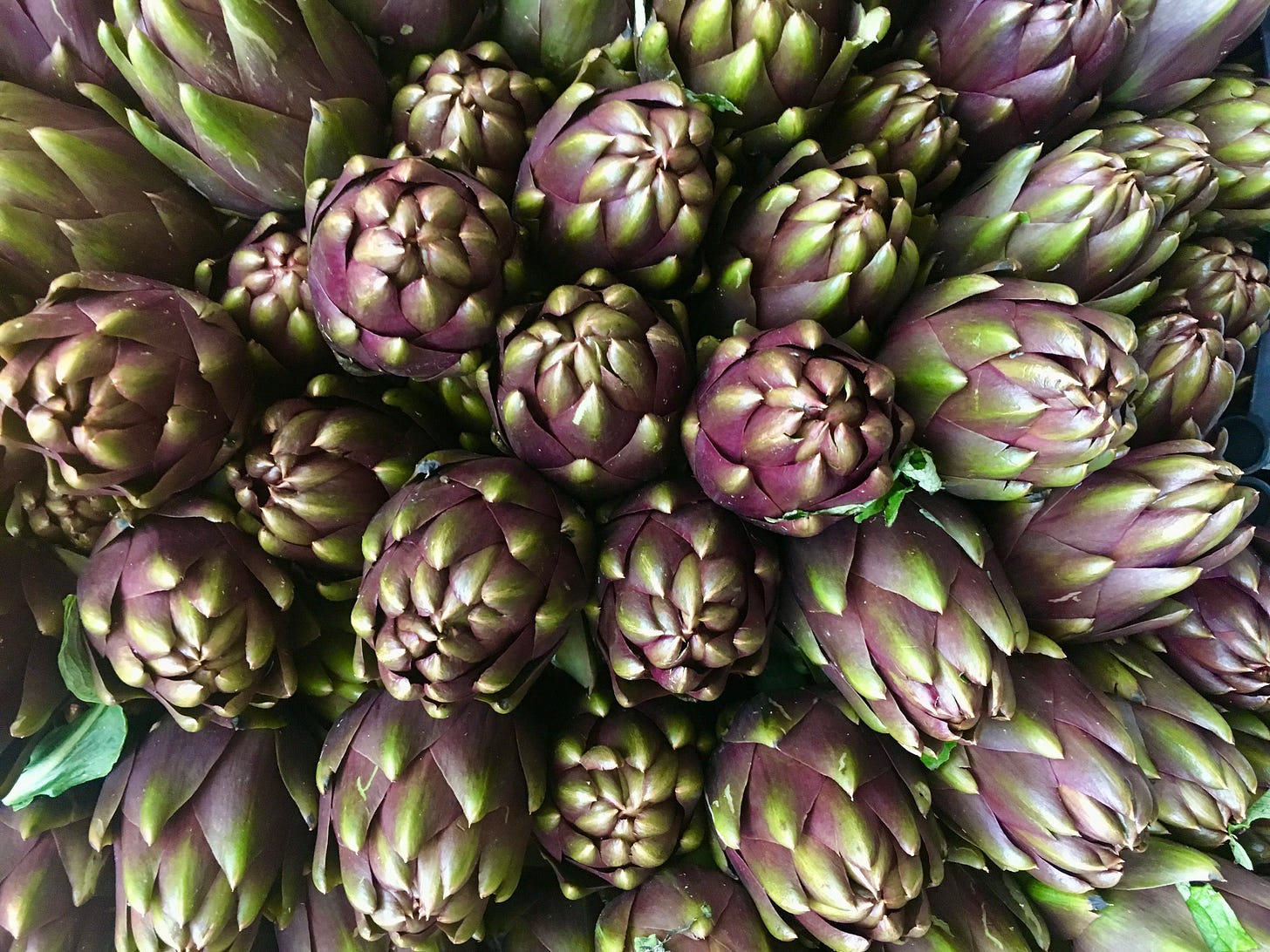Gillian Knows Best guide to artichokes in Rome
Advice on where to eat, buy, and how to prepare Roman artichokes
Early spring is a wonderful time to be in Rome. It’s not just about the puffy white clouds blue skied days or Easter. It’s artichoke season! Here is my guide to artichokes in Rome.
People in this part of the world have been eating the bitter sawtoothed vegetable for centuries. You can see depictions of artichoke leaves inside some Etruscan tombs in Tarquinia. Apicius wrote about them too. The very first small and spiky artichokes called Spinoso, from Sardegna appear in the market just after the end of the Christmas holidays. They are delicious raw, sliced thin in a salad. Now it is time to look for the first of the enormous piles Carciofo Romanesco stacked high in market stalls.
What is a Roman Artichoke
The round purple tinged Carciofo Romanesco have tender leaves and a choke without the fearsome prickle that the California artichokes I grew up eating have. There are two distinct kinds, the Castellammare that is harvested in January and the Campagnano that you are starting to see now in the spring. Both are called mammola or in Roman dialect, er cimarolo. To be an official IGP Roman artichoke the plant must grown in provinces of Viterbo, Rome and Latina.


There are two ways that artichokes are prepared here in Rome; alla giudia and alla Romana.
Alla giudia: The entire artichoke is deep fried to create kind of a Roman version of a blooming onion. Presented like a gorgeous flower on your plate, you can pick off each crunchy leaf like a potato chip
Carciofi alla Romana: A trimmed artichoke is stuffed with garlic and a local wild mint called mentuccia is then braised in olive oil and a little white wine





